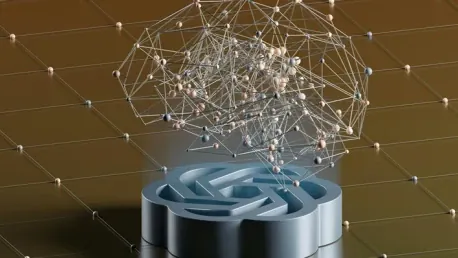Artificial intelligence (AI) continues to make significant strides in various industries, and its integration into healthcare is particularly promising. However, a recent study by Osaka Metropolitan University evaluated the diagnostic abilities of generative AI models, specifically ChatGPT, in comparison to human radiologists. Led by Dr. Daisuke Horiuchi and Associate Professor Daiju Ueda, the study delved into the diagnostic accuracy of ChatGPT’s different versions—GPT-4 and its vision-enabled counterpart, GPT-4V—using a sample set of musculoskeletal radiology cases. The results revealed some intriguing possibilities and limitations for AI in medical diagnostics.
Comparative Diagnostic Accuracy
Generative AI vs. Radiologists
In the study, 106 musculoskeletal radiology cases were scrutinized, involving the analysis of patient medical histories, imaging data, and imaging findings. These cases were processed using GPT-4 and GPT-4V models, and the results were then pitted against diagnoses provided by a radiology resident and a board-certified radiologist. Interestingly, GPT-4 outshone its vision-enabled counterpart, GPT-4V, in diagnostic accuracy, marking an essential insight for those researching AI applications in radiology.
Despite GPT-4’s comparatively better performance, it was found that the accuracy of both AI models still lagged behind that of the board-certified radiologist. This disparity underscores the importance of human expertise in medical diagnostics. While GPT-4 performed on par with a radiology resident, it still fell short when matched against a seasoned professional. These findings suggest that although AI technologies are advancing at an impressive rate, they have not yet reached the stage where they can replace human judgment in the medical field.
Potential and Limitations
The study confirms that ChatGPT and similar AI models can serve as supportive tools in the diagnostic process. However, an over-reliance on these technologies without recognizing their limitations could be precarious. Generative AI like GPT-4 shows potential for streamlining certain aspects of medical diagnostics, but its utility should be viewed in a supplementary role rather than as a replacement for human expertise. Human experience, especially from board-certified radiologists, remains critical.
Moreover, the results encourage a comprehensive understanding of AI’s capabilities and limitations. ChatGPT may be adept at processing and analyzing vast amounts of data rapidly, but interpreting complex medical images often requires intricate judgment that AI has yet to master. The diagnostic accuracy of AI models can be substantially improved through future advancements, but healthcare providers must exercise caution before fully integrating these systems into clinical practice.
Integration into Medical Diagnostics
Enhancing Diagnostic Processes
Given the increasing role of AI in healthcare, understanding how generative AI models can complement human expertise is crucial. The findings from this study, published in European Radiology, illustrate that while AI systems like GPT-4 can assist in diagnosing musculoskeletal conditions, they cannot yet function independently of trained professionals. The nuanced understanding of AI’s role is vital for future technological developments and their ethical deployment in clinical settings.
Integrating AI into healthcare can potentially enhance diagnostic processes by providing well-organized preliminary evaluations. AI systems can flag probable issues, thus allowing radiologists to focus on more nuanced assessments. This combination of AI efficiency and human expertise could streamline workflows and improve patient outcomes. However, reliance on AI should be carefully monitored to ensure that the final diagnosis always includes a human review.
Responsible Deployment
Artificial intelligence (AI) continues to make significant progress across various sectors, with its integration into healthcare showing immense promise. A recent study conducted by Osaka Metropolitan University has brought to light the diagnostic capabilities of AI, specifically focusing on generative models like ChatGPT. Led by Dr. Daisuke Horiuchi and Associate Professor Daiju Ueda, the research scrutinized the diagnostic accuracy of different versions of ChatGPT, including GPT-4 and its vision-enabled variant, GPT-4V, using a sample of musculoskeletal radiology cases. This comparative study aimed to measure how these AI models stacked up against human radiologists in making accurate diagnoses.
The findings were revealing, underscoring both the potential and the current limitations of AI in medical diagnostics. While the AI models demonstrated some impressive capabilities, there were areas where human expertise still outshone the technology. These insights not only highlight the advances in AI but also emphasize the need for continual development and careful integration of such technologies into healthcare settings to truly enhance medical diagnostics and patient care.









